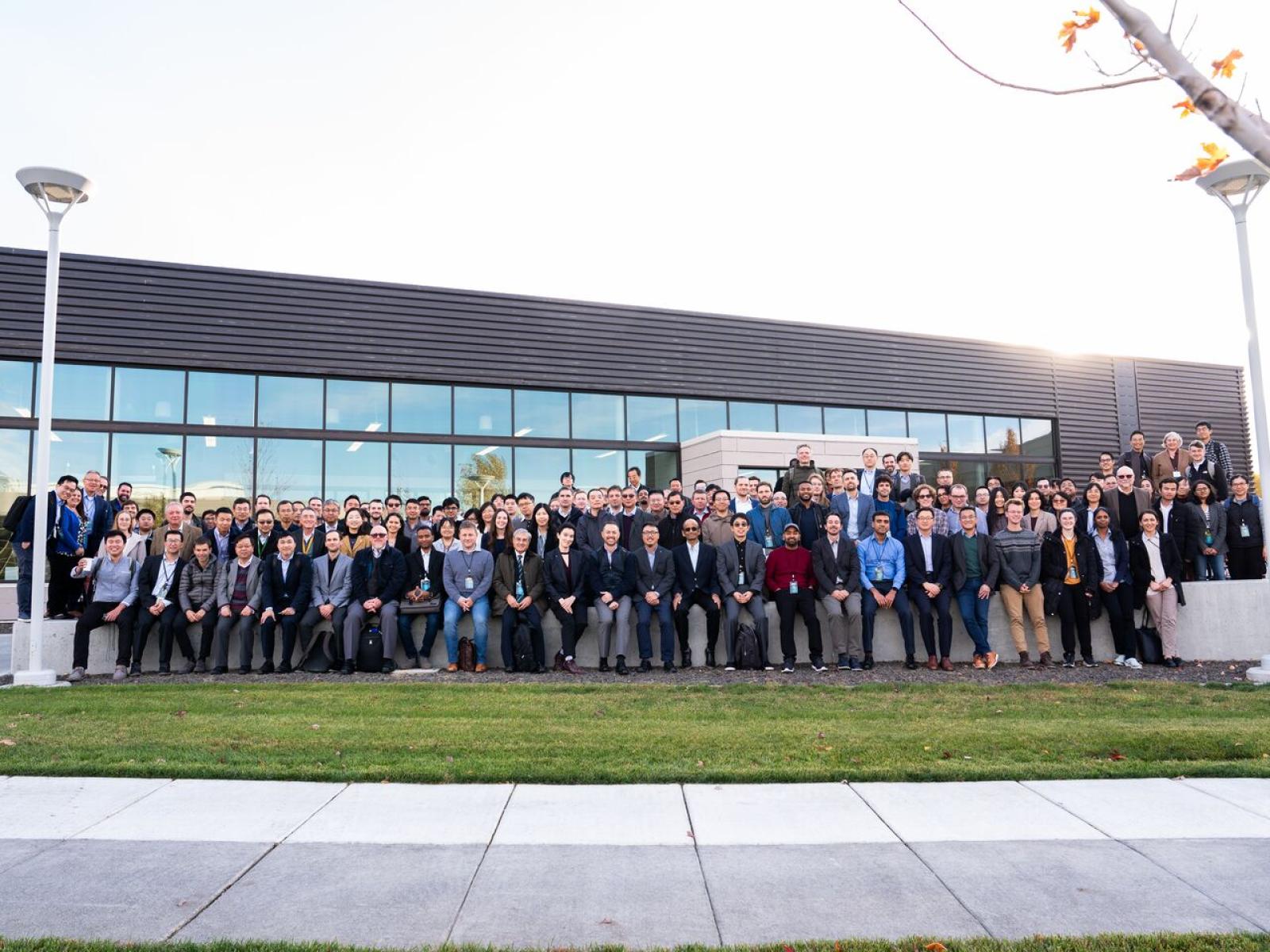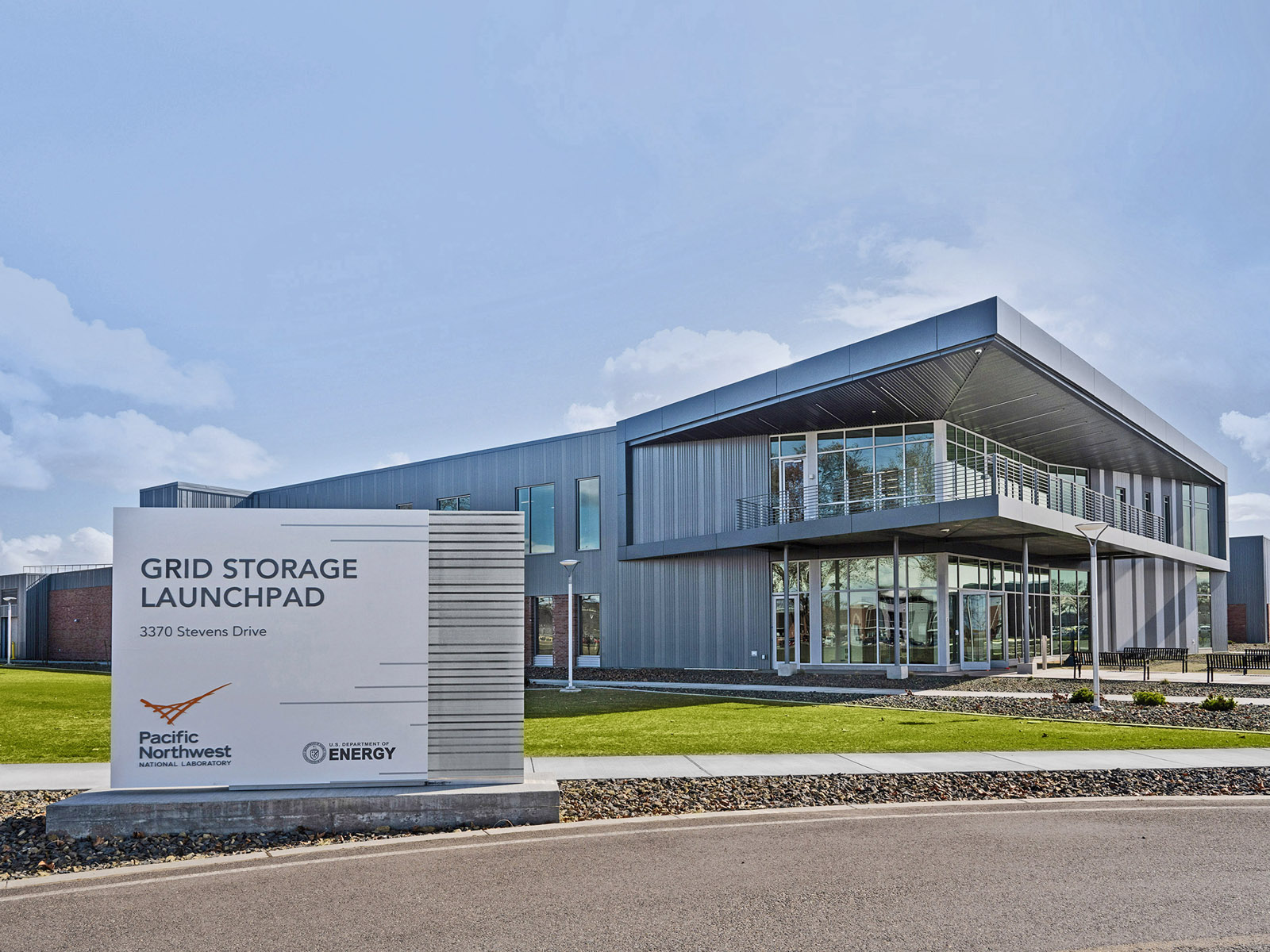PNNL Hosts Global Gathering to Advance Sodium Battery Innovation
Conference Advances Energy Storage Solutions with Collaboration

Attendees of the International Conference on Sodium-ion Batteries participated in four days days of workshops, discussions, tours and networking events at PNNL's Richland campus.
(Photo by Andrea Starr | Pacific Northwest National Laboratory)
More than 160 academic researchers, industry leaders, and policy experts from around the world gathered at Pacific Northwest National Laboratory’s (PNNL’s) Richland campus for the 9th annual International Conference on Sodium Batteries (ICNaB), held November 11-14, 2024. The event served as a global forum for advancing sustainable sodium battery technologies by bringing together experts from 11 countries.
“The conference was an opportunity to learn and discuss the potential of sodium-ion batteries as an abundant, low-cost solution for energy storage needs,” said Xiaolin Li, a materials scientist for PNNL, who organized the conference. “We were excited to welcome experts to PNNL and highlight the Lab’s sodium-ion expertise and capabilities, like the Grid Storage Launchpad.”
Over four days, attendees engaged in more than 40 talks from leaders in sodium battery technology. Discussions ranged from scientific discoveries to assessing the current state of sodium battery development, while experts explored strategies for further advancements in the field. Attendees also had the opportunity to engage in a poster session showcasing 27 projects with the latest developments in battery materials, systems, and applications. Each day concluded with a networking opportunity, allowing attendees to connect and share ideas.
“The program was remarkably informative and offered an in-depth exploration of both the chemistry and commercialization processes, providing a valuable and well-rounded perspective on the sodium-ion battery field," said conference attendee Allen Stoneberg, of Cognys Industrial.
Spotlight on GSL

Hosting the event at PNNL presented an opportunity to showcase the Grid Storage Launchpad (GSL), a $75 million research and development facility funded by the Department of Energy’s Office of Electricity. Conference delegates toured the GSL and learned how the facility supports the full lifecycle of battery development, from fundamental materials and device prototyping to 100 kW-scale testing and validation.
Conference attendees toured the GSL, where they learned about the facility’s wide range of capabilities in developing energy storage technologies, including sodium-ion batteries.
“The GSL provides the tools to help accelerate the development of key performance and scalability solutions in sodium-ion technology, bringing us closer to real-world applications that will transform energy storage on a global scale,” said Vince Sprenkle, GSL director.
Shaping the future of sodium-ion batteries
Sodium-ion batteries are gaining recognition as a promising solution for energy storage. While challenges such as improving energy density and increasing lifespan have delayed commercial production of sodium batteries, efforts like the Sodium-ion Alliances for Grid Energy Storage (SAGES) are focused on overcoming these hurdles to accelerate deployment.
“It took 40 years for lithium-ion to be commercially viable for electric vehicle and grid applications, but we need to accelerate the learning curve for sodium,” Sprenkle said. “Regardless of what sodium technology you’re interested in, we need to work together to rigorously test, validate, and meet performance and cost—so we can get it out into the world.”
International collaboration drives innovation
The conference demonstrated the importance of collaboration across borders. Months of planning and coordination were invested in planning the ICNaB. From curating a diverse lineup of speakers to coordinating logistics and developing an impactful agenda, the following individuals and committees from around the world worked to make the conference a success:
Conference Co-chairs:
Xiaolin Li, PNNL
Christopher Johnson, Argonne National Laboratory
The International Scientific Committee included:
Teófilo Rojo, University of the Basque Country UPV/EHU
Maria Forsyth, Deakin University
Yongsheng Hu, Institute of Physics, Chinese Academy of Sciences
Shinichi Komaba, Tokyo University of Science
Christian Masquelier, Université de Picardie Jules Verne
Laurence Croguennec, ICMCB-CNRS, Université de Bordeaux
Stefano Passerini, Karlsruher Institut Fur Technologie
Margret Wohlfahrt-Mehrens, Zentrum fur Sonnenenergie- und Wasserstoff-Forschung Baden-Wurttemberg
The Local Organizing Committee included:
Xiaolin Li, PNNL
Vincent Sprenkle, PNNL
David Reed, PNNL
James Greenberger, NAATBaat
Colin Wessells, Natron Energy
Claire Xiong, Boise State University
Lara Watkins, PNNL
Published: December 6, 2024